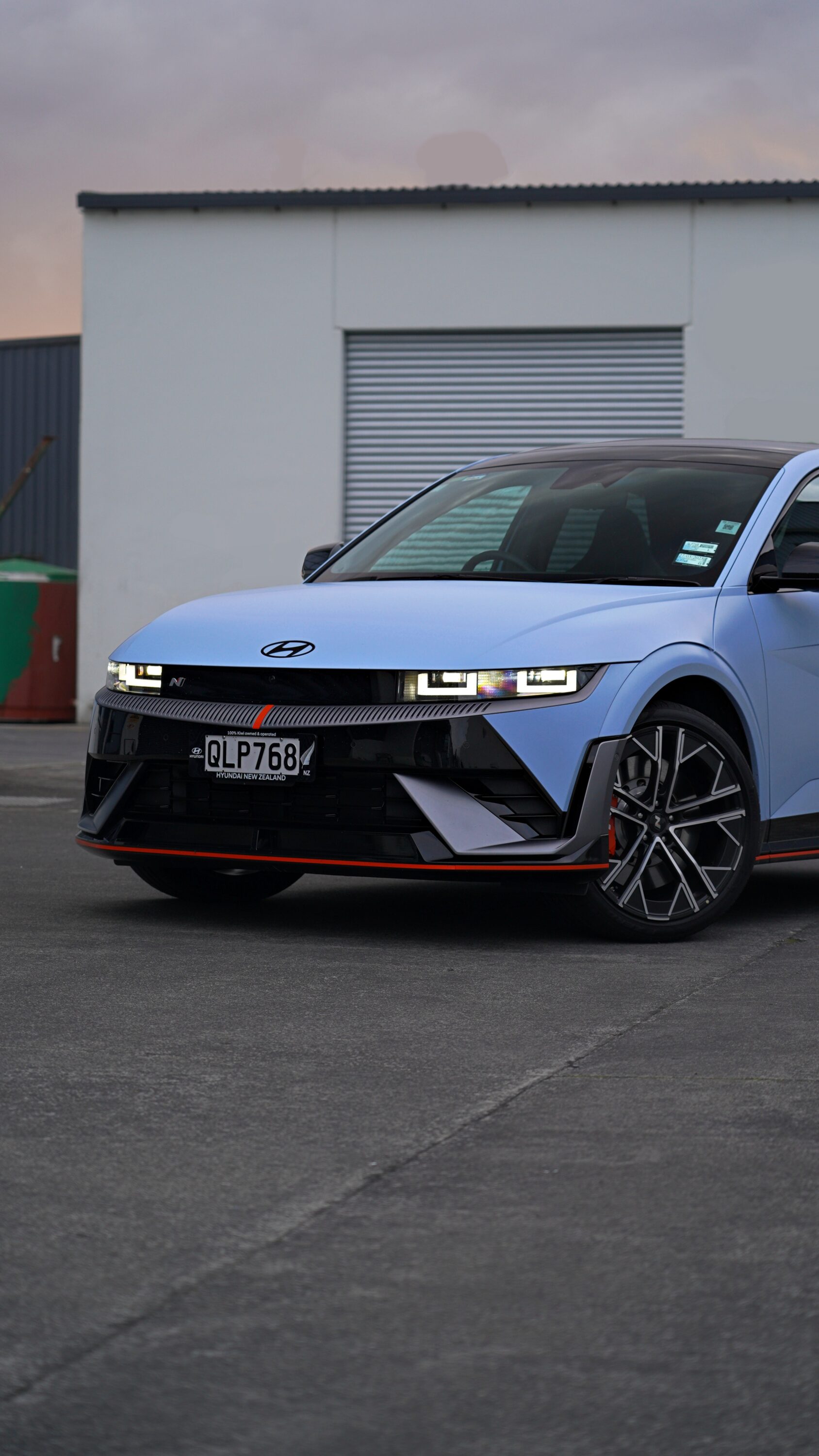The N sub-brand has been somewhat of a renaissance for Hyundai. By bringing a focus on raw enjoyment, they introduced models that quickly became benchmarks in their segments: the i30 N, the i20 N, and more recently the Kona N. But the Korean brand has also been busy on the EV department, so it was only a matter of time until the first electric N product became available.
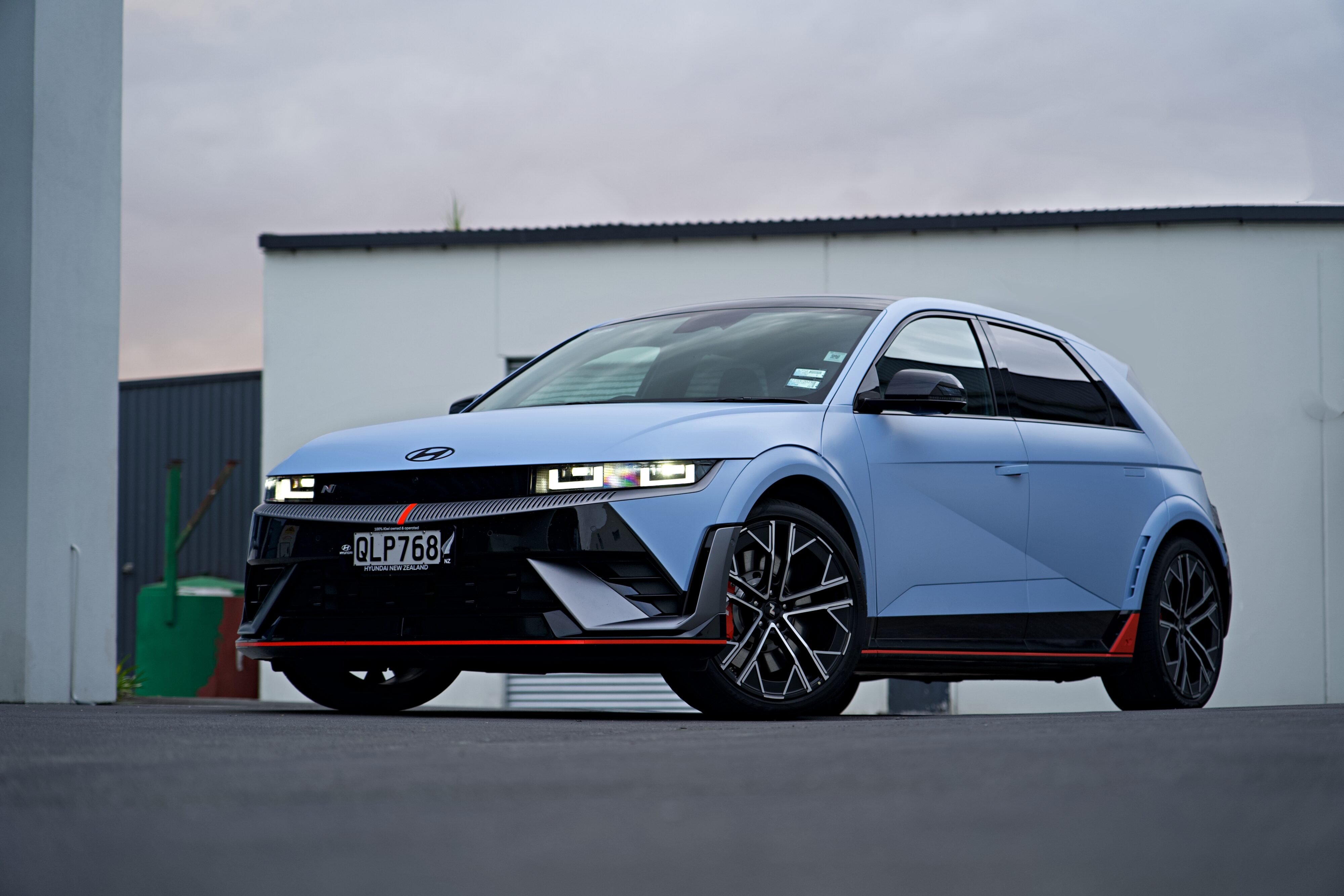
That’s where the IONIQ 5 N comes in, bringing new front and rear motors that shoot the hatchback-looking-SUV to new heights. But quick, dragster-like EVs are everywhere, so Hyundai gave it a trick up its sleeve to set it apart from the competition. A trick so good that I basically stole the keys off of Dave’s hands so that I could enjoy it for a while longer and take as many people as possible on rides so that they could experience it too. My count by the end of my time with it was 15 people, so please oblige me in being number 16.
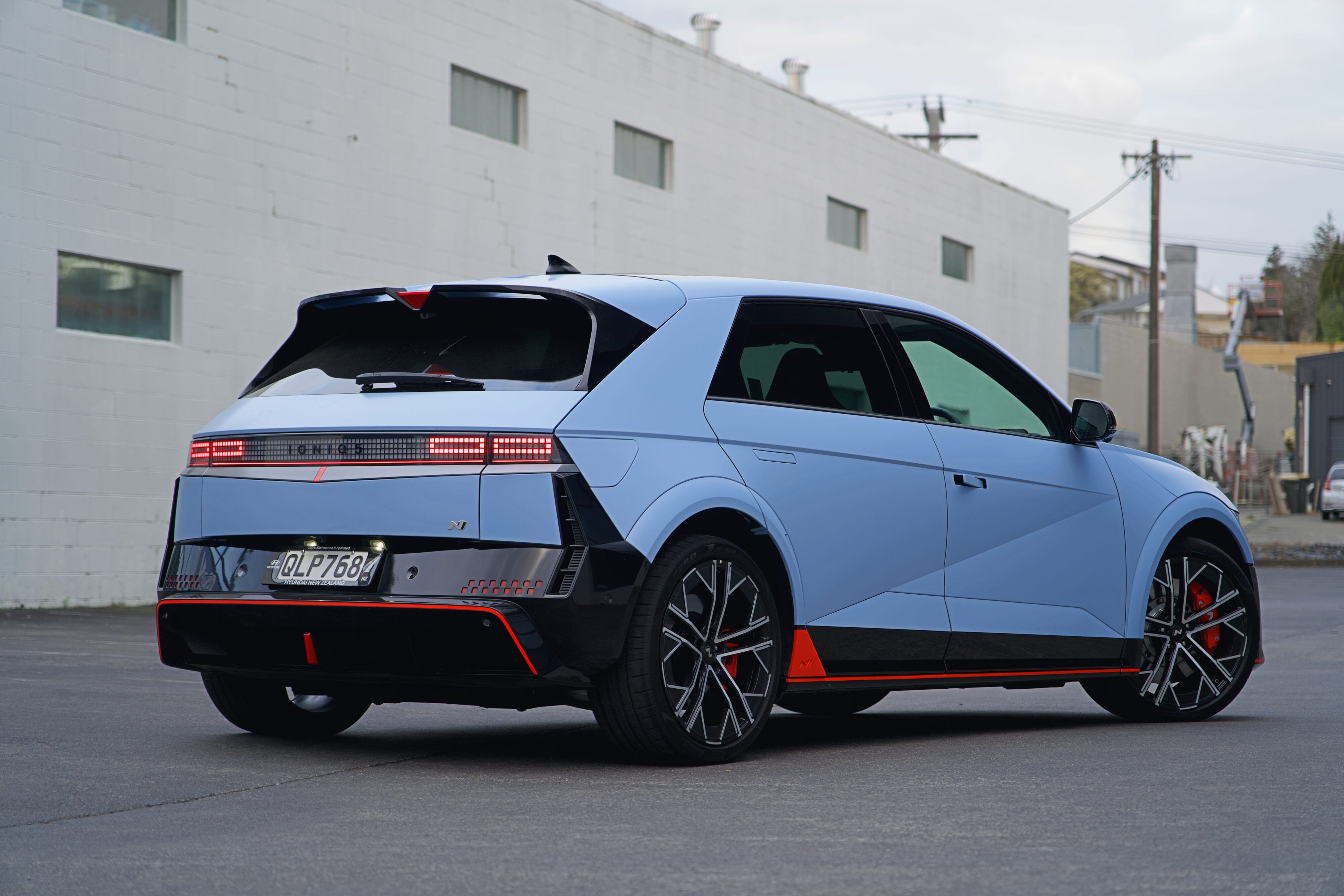
The 5 photographs like a hatchback, but this is purely because of its spot-on proportions. It is more crossover sized, and this translates into great levels of space in all seats. The rear seats recline and slide, leading to more modularity for the boot, and the front ones are one of the stars of the show in the interior. They are now bucket units, with an N logo that lights up and a good range of (manual) adjustments.
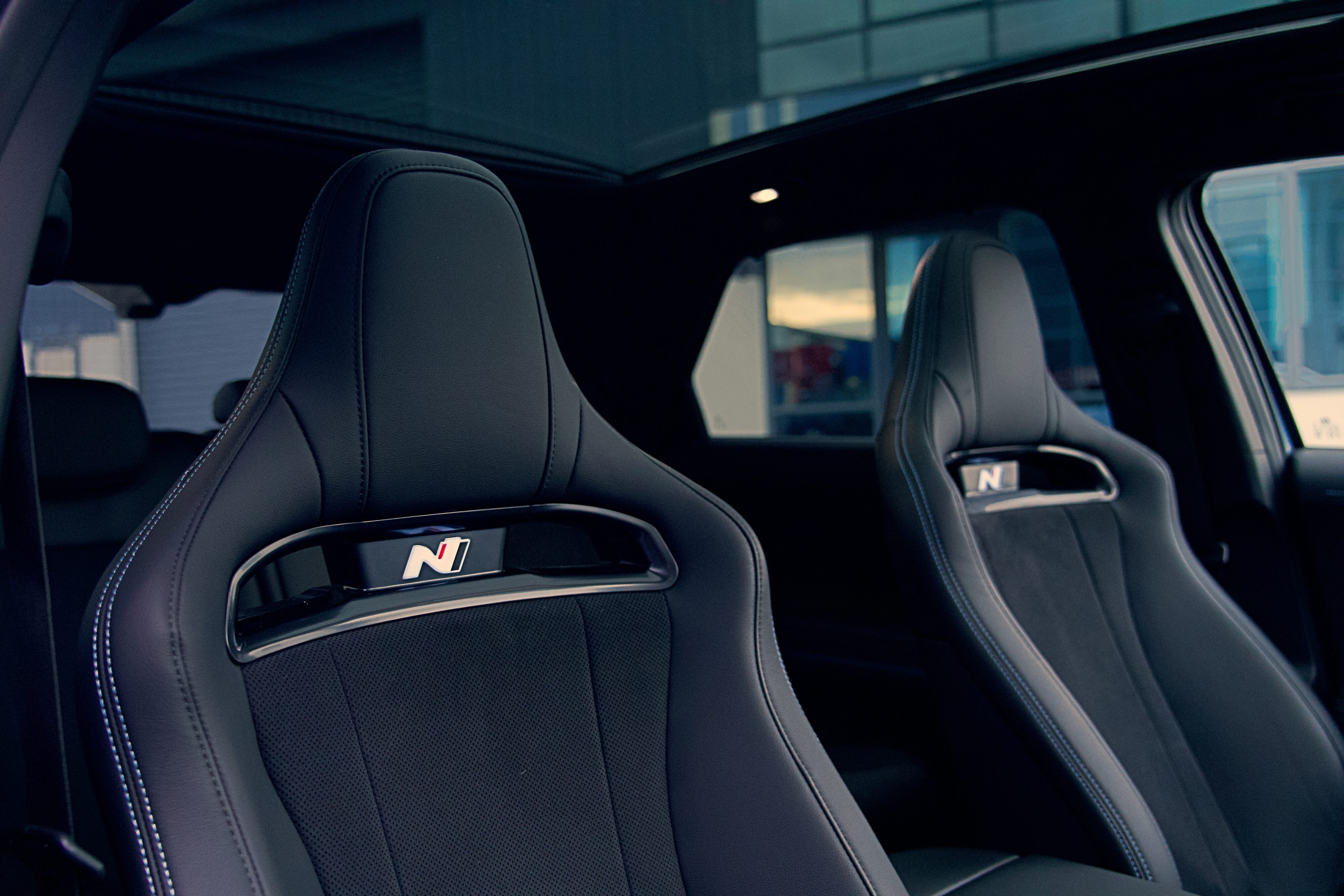
The beautiful matte blue hue accentuates the sharp lines, and even if you don’t get it in the N-specific colour, there is no mistaking it for a lesser trim level: this car is wider, has longer overhangs and enough badging and red accents to set itself apart. I have really liked this design since its inception, and thought the N was going to be more polarising – it wasn’t, people loved it.
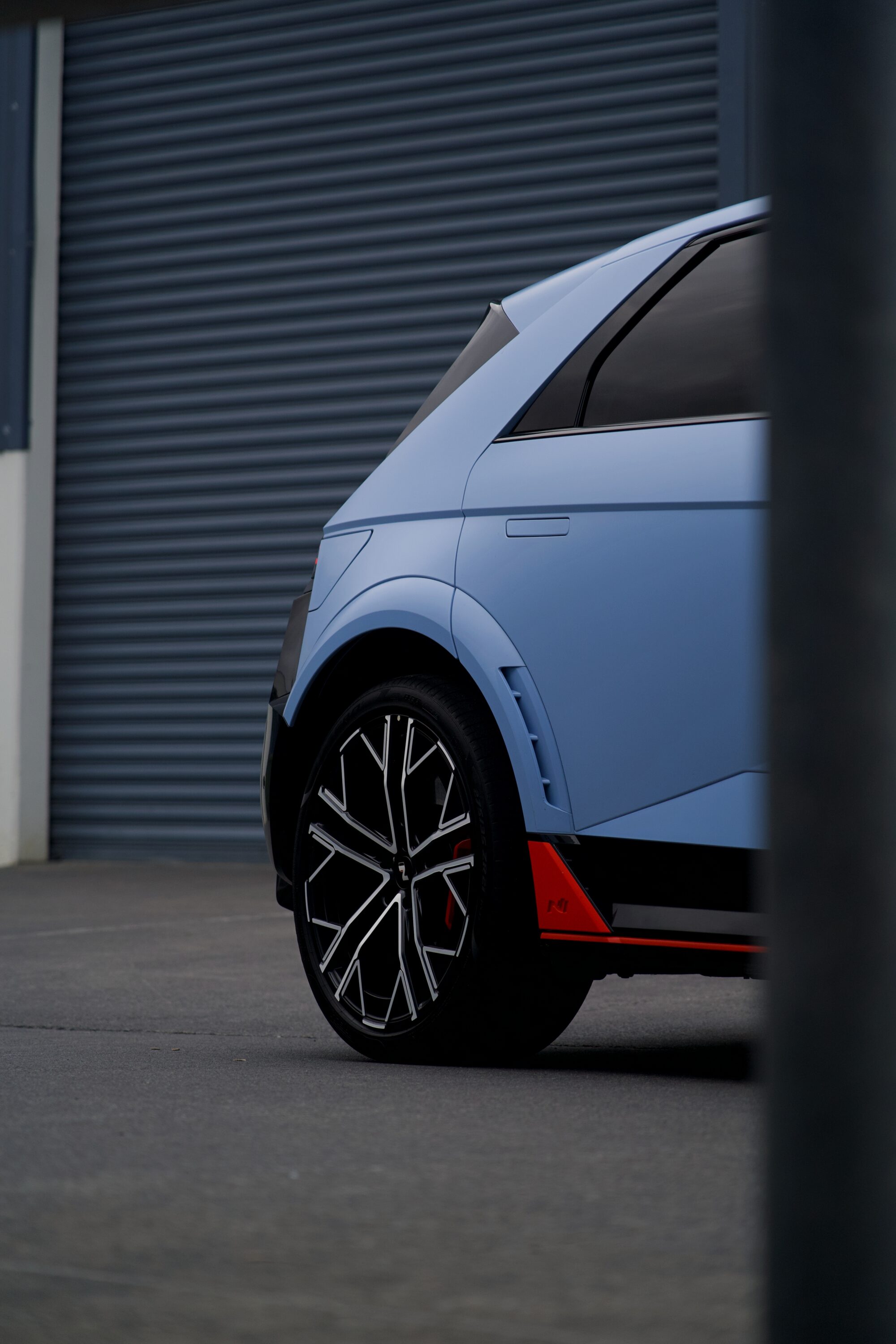
The technology implementation available here is what you will usually get in other models of the brand. The screens react quickly, it is easy to get around and once you’re done with the initial setup, you’re good to go. Until you start to play around with the N settings, that is. It is clear that this addition to the car’s system is not to the same degree of usability as the rest: there are options scattered across different menus, and things that are integral to the novel driving experience are hard to recall while driving.
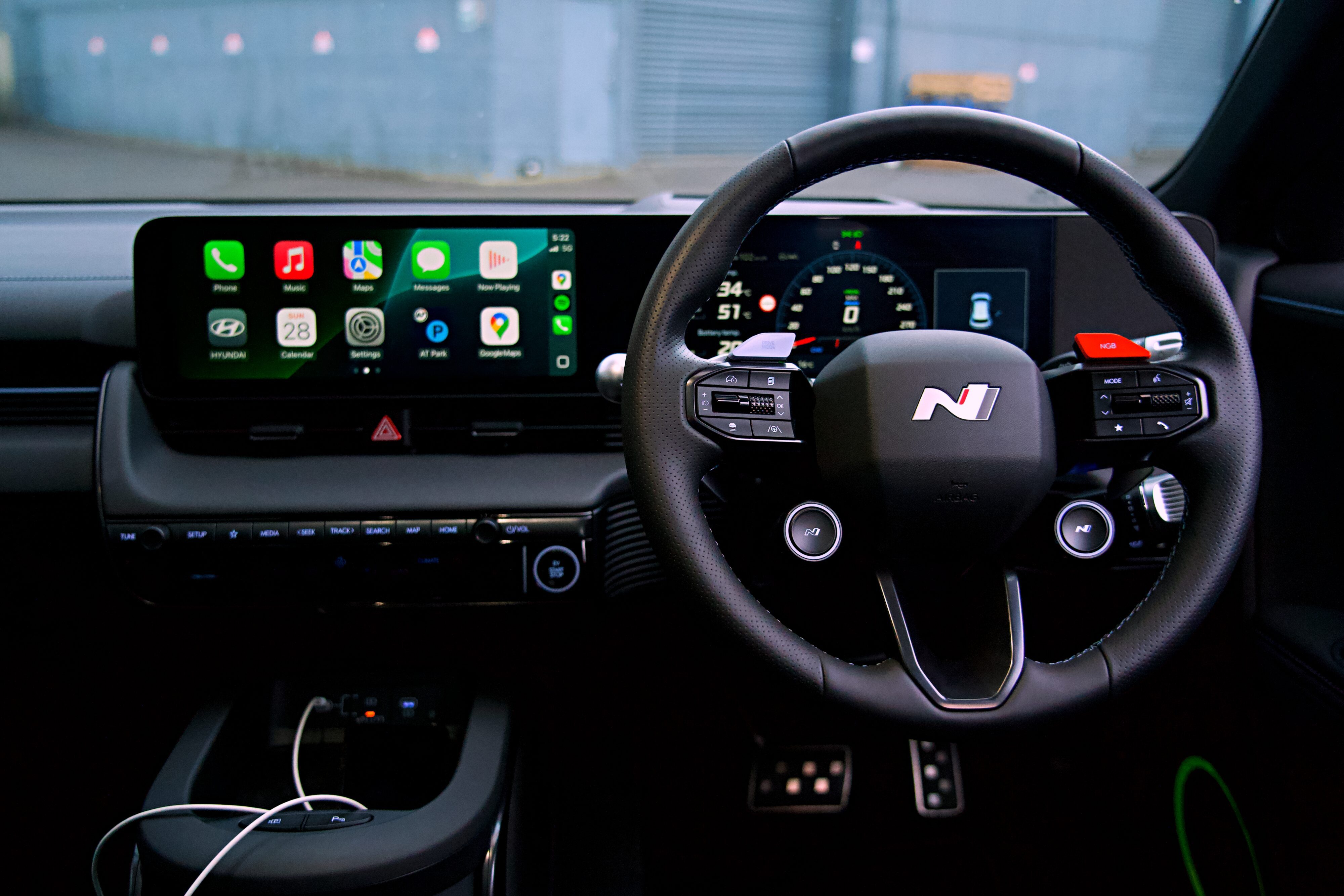
There is a dedicated N menu that leads not only to those settings, but also to features you could use while on track, such as a Drift Optimiser, a lap timer (with all major NZ tracks!) and a G-force meter. You can select from 3 different synthesised soundtracks (Ignition, Evolution and Supersonic), toggle differential, motor, suspension and steering settings, or even toggle on a setting that keeps an eye out for windy road signs and adapts the car for those situations.
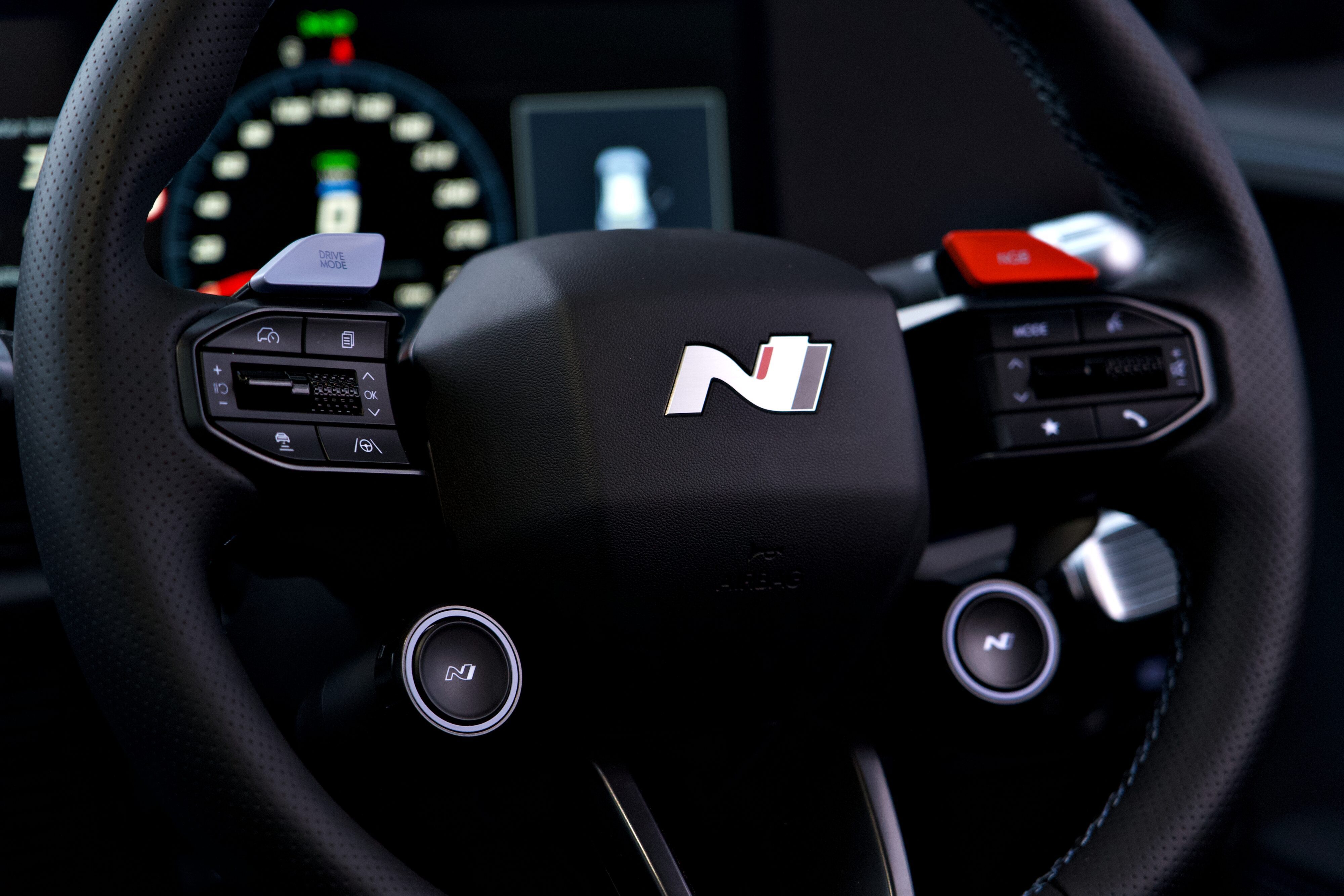
It is very overwhelming at first, and this is coming from someone that likes to dig around screens and fiddle with everything. The easiest thing to do is to configure two personalised settings to use with the dedicated N buttons on the wheel, and stick to them. I used the left button to toggle between N Custom 1 and 2 (configured in a very Jekyll & Hyde manner) and the right one to toggle on or off that trick Hyundai gave to the 5 N, called N e-Shift.
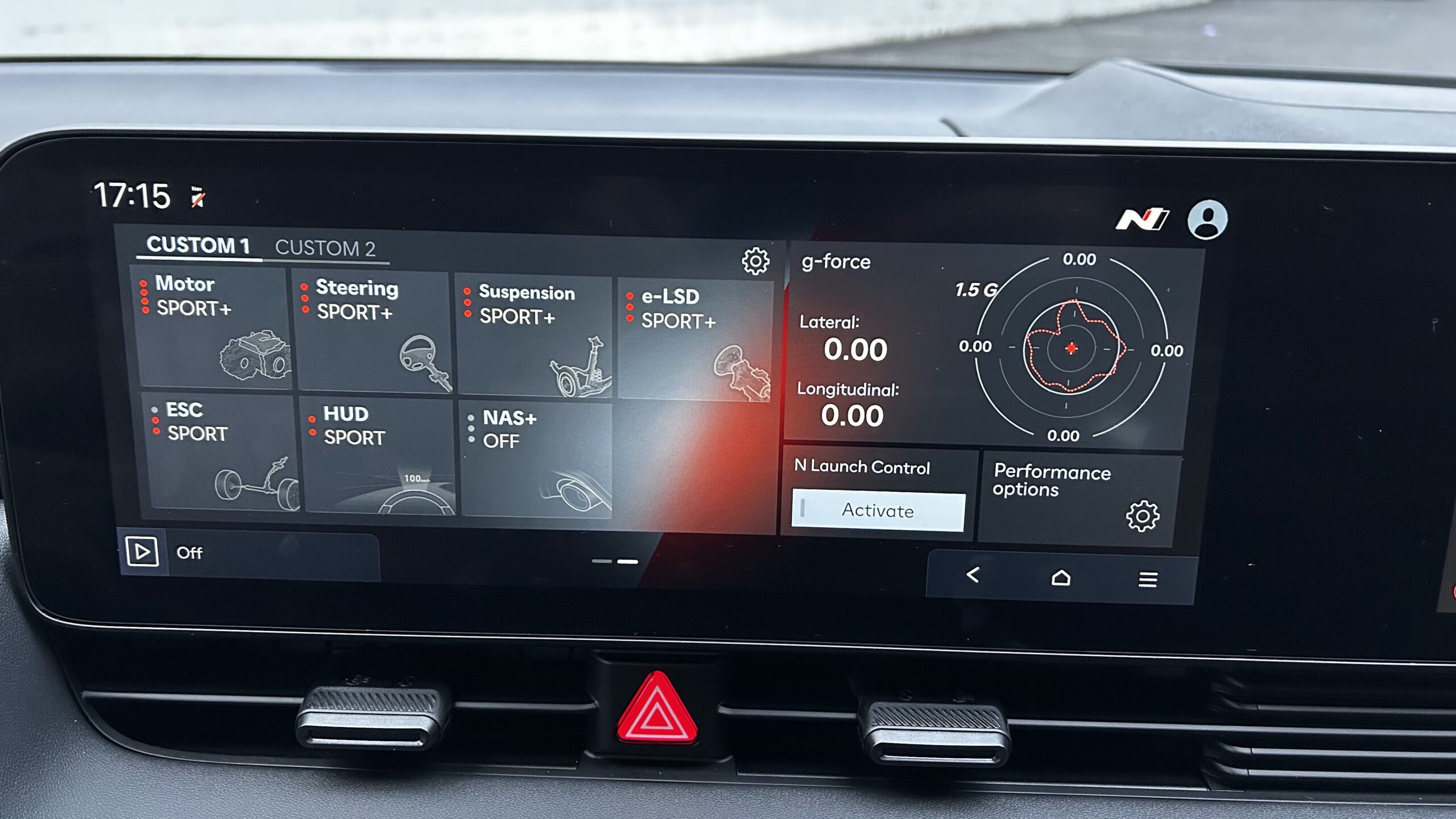
This novel feature is pure software dark magic (technical terms, I’m sure) that simulates the behaviour of an dual clutch, 4 cylinder turbocharged car, something that Hyundai proved time and time again they know how to do properly. It will turn the cluster screen into a tachometer with shift lights, will allow you to rev all the way to the “fuel cutoff” and will respond in a shockingly good way to your inputs. Upshifts under load will come with a clutch kick, pushing the car to the fake limiter will make it not upshift and cut power, and having the car in too high a gear will result in it bogging and not delivering full power. It is truly impressive, the star of the show and something that completely changes your watermark on the auditory and tactical response an EV can offer you.

When taking people on rides, I’d start with the car in Eco mode. Here, you can adjust levels of regeneration, enable one-pedal driving and enjoy peaceful, silent EV driving. But, with the added power, one quick stab on the throttle was all it took for it to take off. Once you’re past the numbness built into the response in this mode, power delivery is progressive, and goes consistently all the way to the top. At the end of the day, we’re still dealing with 478kW of power from the two new motors (The front one is a bigger assembly, that in this application eliminates the “frunk”).
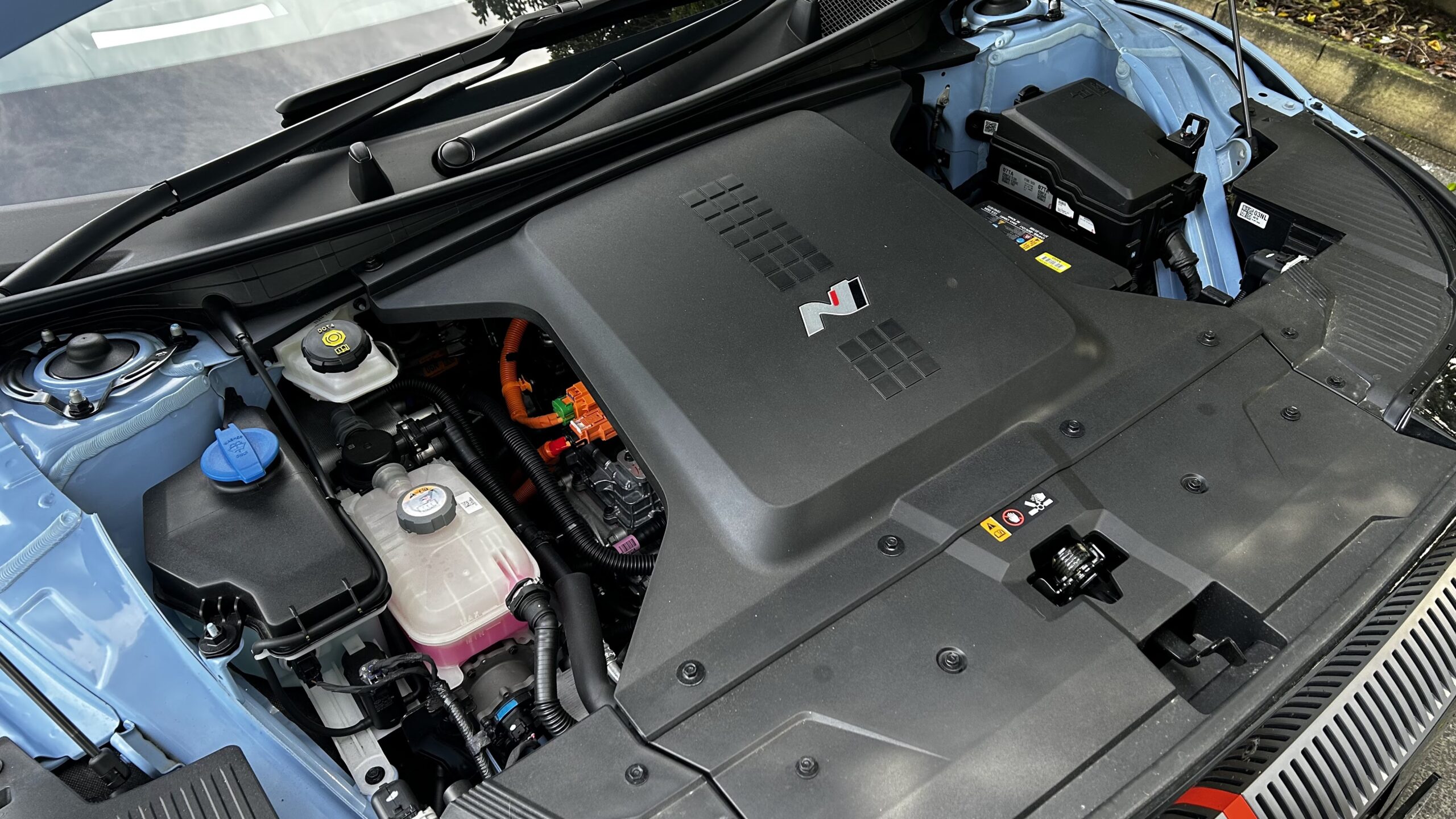
By changing it to N Mode, every setting would be amped up (pun intended), and the speakers would start pumping the “Ignition” sound, linked to the vehicle’s speed. I would use this to show the power on tap and how the added auditory feedback was helpful. But the icing on the cake was when e-Shift came on. Just a few minutes going up and down the gears and even my most EV-skeptic, NA-loving friend had good things to say about it.
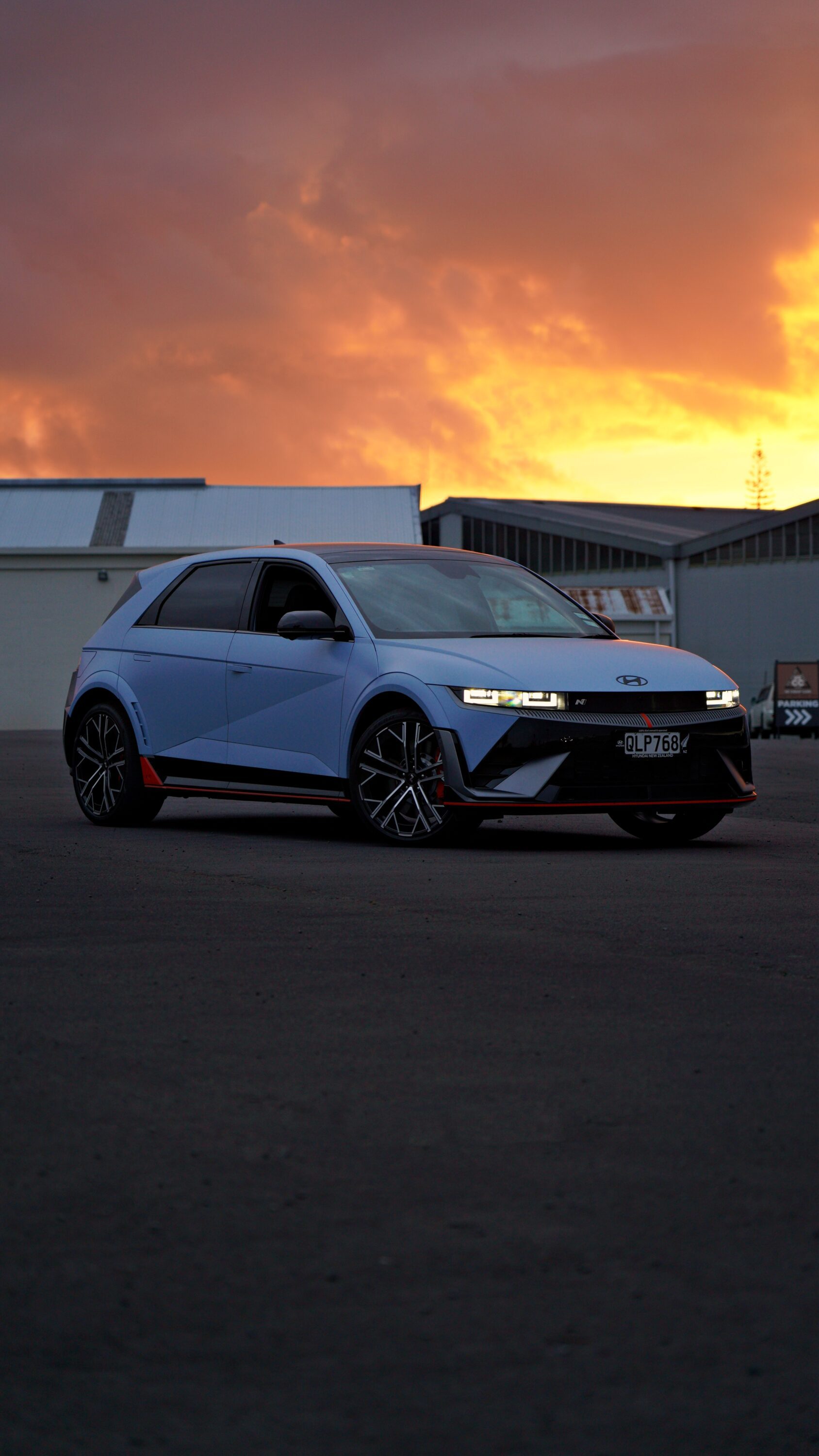
In hindsight, maybe I should have done the opposite: start the rides with N e-shift already on and see who could pick up on whether it was an EV. That’s how good it is. Cars have so much artificial sound being pumped inside nowadays that I believe it could fool those that didn’t outright know the 5 is only available with electrons as fuel.

When I was done with the joyrides and we went to film our review, Dave chose a location up North where we could have a windy road to ourselves, and it really paid off. To a point where each one of us could test each other’s threshold before we would be stomping on the imaginary brakes on the passenger footwell.
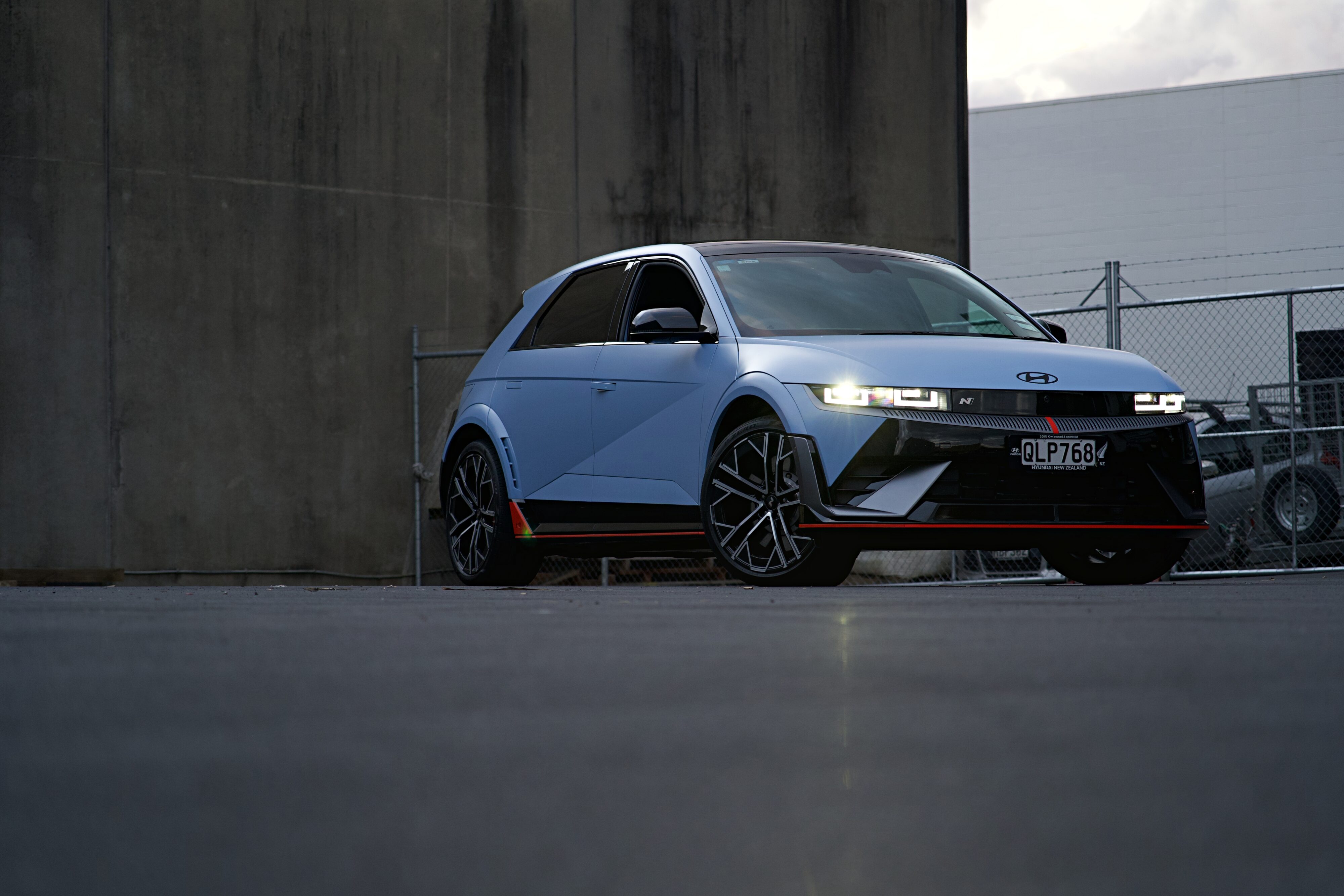
When things get windy, EVs tend to fall apart, but not here. The 5 N masks its hefty weight extremely well, and has virtually infinite front end grip. The hardest suspension setting leads to a bit of pogo-ing when there is a lot of transfer in bumpy tarmac, but never enough to upset the 21 inch PZeros and the stiff chassis that received the N treatment with more adhesives and welds.

The steering weighs up but I wish it transferred a bit more feedback to better gauge traction. This is because the rear diff is very eager to lock and give you oversteer when asked, but the electric power steering filters some of the response you’d get to your hands. Brakes are very powerful and predictable, and Hyundai claims they can hold to longer track sessions with no fading issues. What a blast that must be.

There is no getting around the fact that it isn’t a cheap car, and that the real engagement that it is “simulating” can be found for less money somewhere else. But this was an exercise on something new, and in an environment where brands are afraid to try new things, Hyundai went out on a limb and nailed and landing. And I commend them for that.
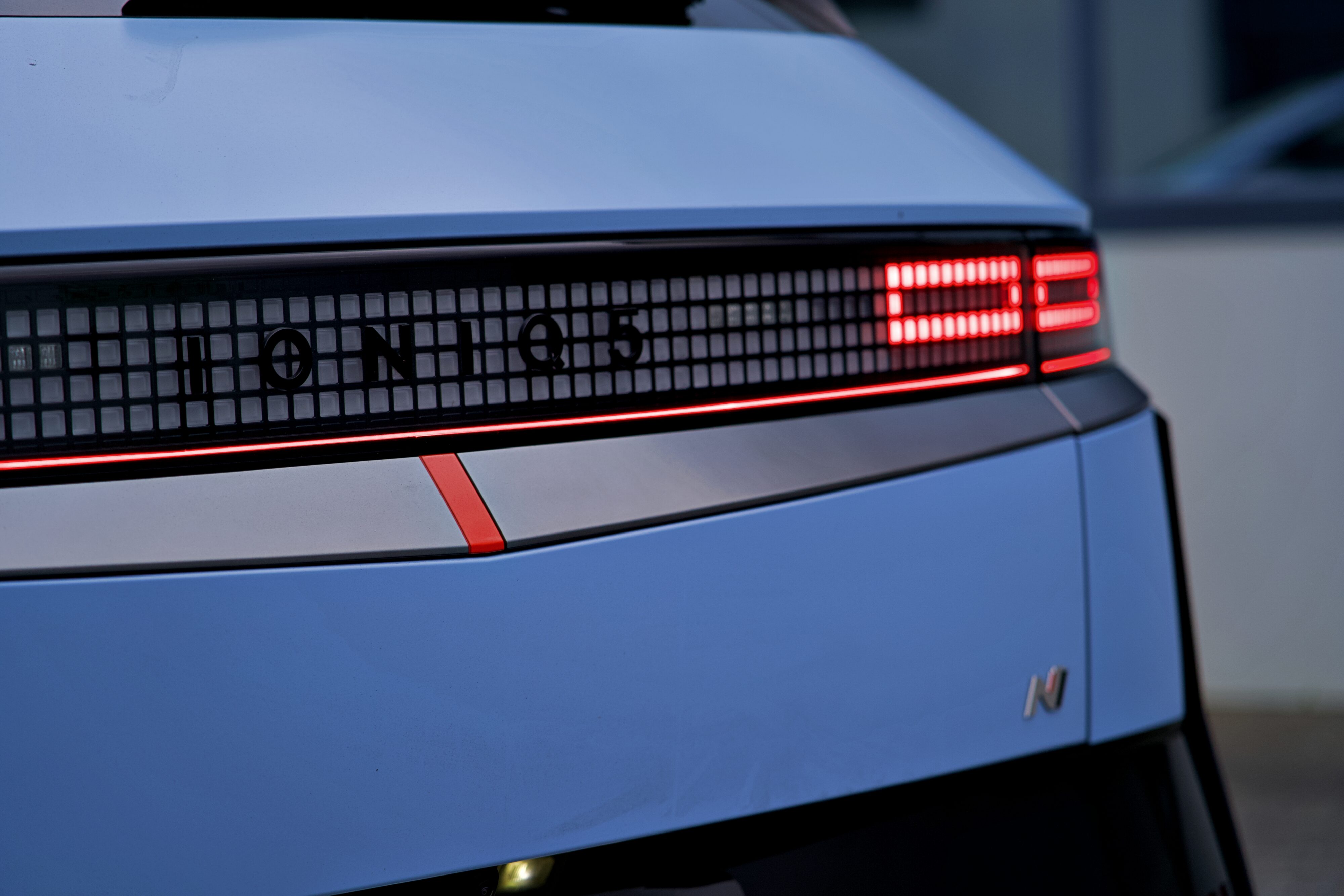
They had every opportunity to get this wrong. If the G forces didn’t align properly with the sound being pumped, or if the engine response didn’t change so much depending on gear and RPM, this would have been the joke of the century. But they got it dead right. The idea of an EV that simulates the behaviour of an internal combustion engine is really easy to dismiss and scoff at, and it’s not until you try it that you can actually realise how much it actually contributes to the enjoyment. And that’s why I had so many people ride along.
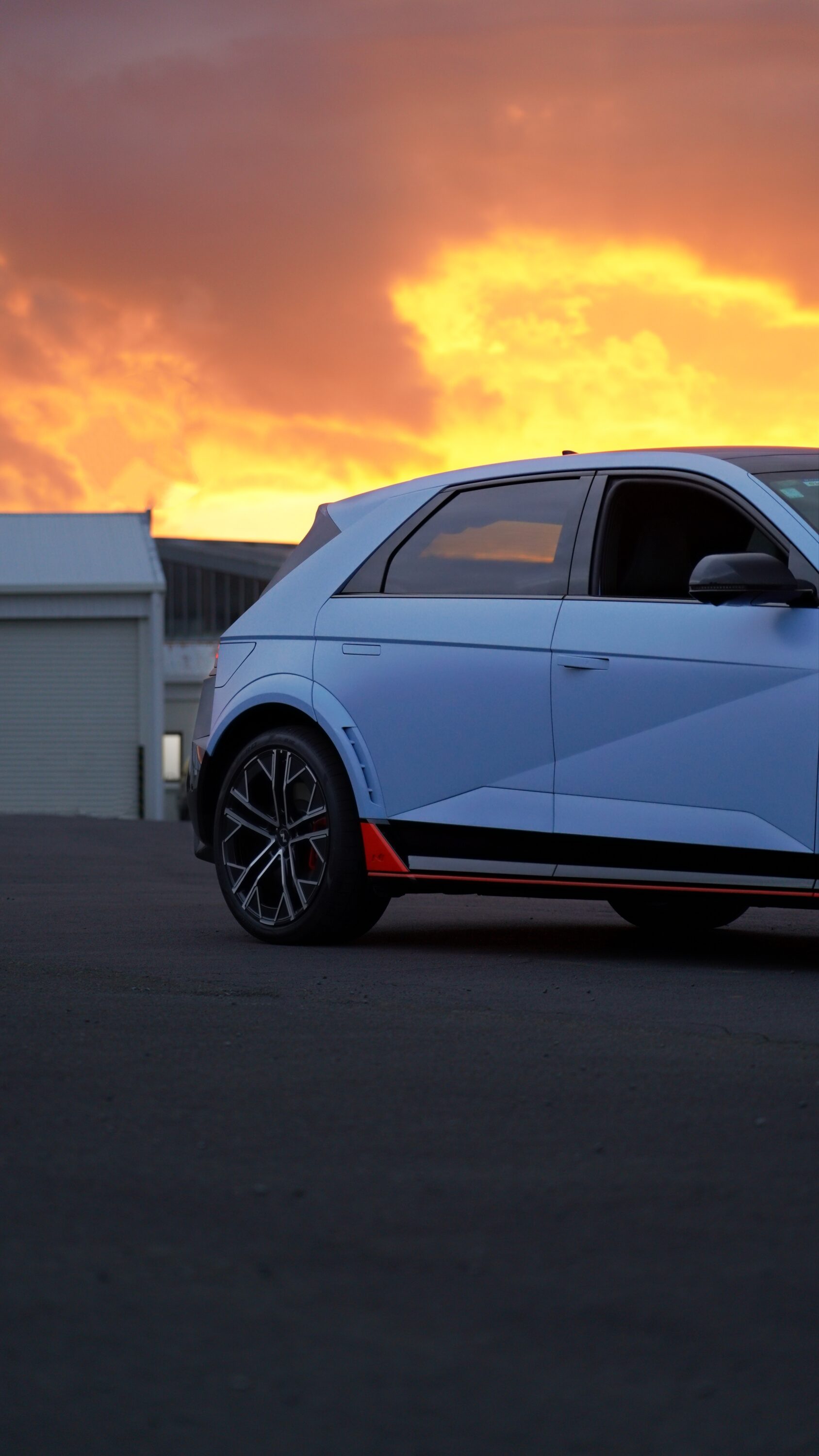
The IONIQ 5 is the closest you can get to have your cake and eat it too. It is the most engaging EV I have ever been in, and can morph back into being a transportation pod at the press of a button. It might represent an interesting shift in the industry, especially if it keeps being well received like this, and one I cannot wait for other brands to follow. If you’re on the fence, you owe yourself a drive, even if you have to spend 35 minutes tailoring the settings. Thank you for the incredible opportunity, Hyundai New Zealand, and I cannot wait for the next chapter in the N journey! And thanks for reading this far!
